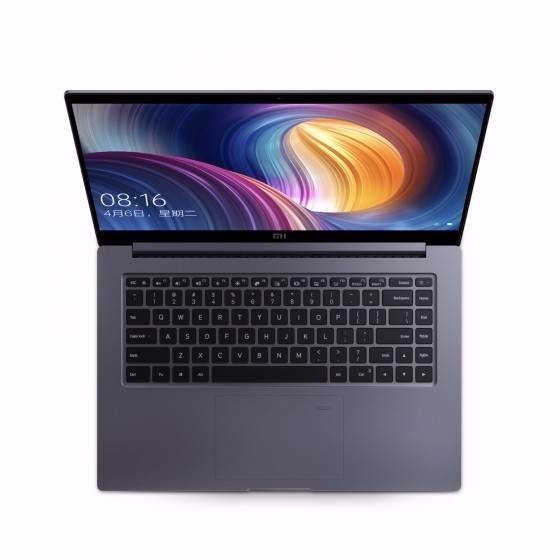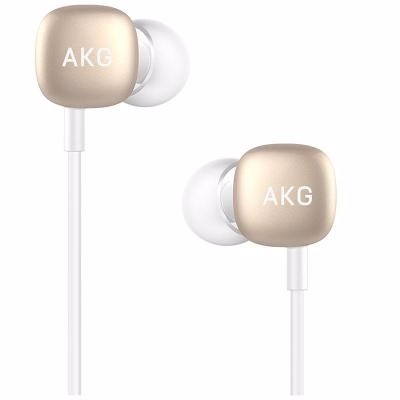- Hongmeng 4.0, Huawei Smart Driving, 5G RedCap! Year end inventory: Eight major trends in the IoT industry in 2023
- Five layer architecture of the Internet of Things: perception layer, network layer, data layer, application layer, and business layer
- Industrial Internet of Things and Its Applications: Concepts, Architecture, Key Technologies, Applications, and Challenges
- A fully open-source IoT platform for the Internet of Things
- Deep Analysis of the Working Principles of the Internet of Things (IoT)
E-mail:mkt@xhyiot.com
TEL:+86 400-886-5683
Address:Building 1, 1st Floor, No. 58 Dijie Road, Baoshan District, Shanghai
Hongmeng 4.0, Huawei Smart Driving, 5G RedCap! Year end inventory: Eight major trends in the IoT industry in 2023
2023 is a year full of changes and transformations, with artificial intelligence represented by ChatGPT accelerating digital transformation, technological innovation, and industrial transformation expanding in depth. On the other hand, we have seen that the consumer Internet of Things, automotive, industrial, and infrastructure sectors have all experienced adverse effects of economic slowdown this year, but some markets are showing signs of recovery. The external macroeconomic environment presents both opportunities and challenges for the Internet of Things and semiconductor industries. Electronic enthusiasts have conducted continuous research and questionnaire interviews with customers in the Internet of Things industry for many years. At the end of the year, we will share our views, the latest technological trends and application trends in the industry, and industry colleagues during the research with the experts. 1. Generative AI enters the end side, accelerating the evolution of intelligent devices
ChatGPT and generative AI are sweeping the world, leading to an explosion in demand for IoT edge devices and an increasing demand for edge computing power. In the past, AIoT used to be small chips with low computing power on the end side, but with the widespread application of large language models like ChatGPT, deploying LLM large models that required tens to hundreds of TOPS of computing power on the end side AIoT chips has become a new demand. In February 2023, at the World Mobile Communications Conference, Qualcomm demonstrated the world's first terminal side demonstration of Running Stable Diffusion on Android phones based on the second-generation Snapdragon 8. Through Qualcomm's full stack AI, it optimized the Stable Diffusion, a large text-based graphics model with over 1 billion parameters. It can complete 20 steps of inference within 15 seconds and output a 512 * 512 image.

On October 24th, Qualcomm announced the launch of the third-generation Snapdragon 8, the most powerful mobile platform to date. The performance of Hexagon NPU has significantly improved, bringing about a significant improvement in performance. It supports generating text using large language models and images using large visual models. Due to significant improvements in performance and energy efficiency, it can support generative AI models with parameters up to 10 billion. At the China International Import Expo on November 6th, Qualcomm showcased the latest progress of generative AI on mobile phones. The iQOO12 series and Xiaomi 14 series, equipped with the third-generation Qualcomm Snapdragon 8 mobile platform, have made their debut. At this exhibition, Qualcomm showcased Snapdragon X Elite reference design laptops. Snapdragon X Elite is Qualcomm's strongest computing processor ever built for PCs, supporting generative AI models with over 13 billion parameters on the terminal side. On November 6th, MediaTek officially released the flagship 5G generative AI mobile chip of the Dimensity 9300, which supports up to 33 billion parameter large models. Vivo has conducted deep cooperation based on the Dimensity 9300 chip and is the first to implement a 7 billion parameter large language model on its flagship mobile phone, and has also achieved 13 billion parameter large language model side to side operation. The Canalys report points out that chip manufacturers such as Qualcomm, MediaTek, Samsung, and Google have been focusing on improving the performance of NPUs and TPUs for many years, while smartphone manufacturers such as Apple, Huawei, vivo, and Xiaomi are also applying AI algorithms to devices to improve imaging quality, battery life, and typing experience. In the second half of 2023, algorithm, chip companies, and terminal device manufacturers are all trying to deploy AI big models on the end side. 2. Progress in the Internet of Vehicles: The integration of vehicle, road, and cloud has become a consensus, and NOA functions are accelerating penetration
In 2023, the Internet of Vehicles industry continues to deepen its development, and significant progress has been made in the research and verification of "vehicle road cloud" information exchange in terms of standards; In terms of application, the Internet of Vehicles industry is gradually expanding from technical verification to business scenario implementation. The Internet of Vehicles application focuses on three aspects: empowering L2/L2+intelligent connected vehicles, empowering high-level intelligent connected vehicles, and integrating vehicle road cloud applications to carry out in-depth innovation and practice. According to the data of the Ministry of Industry and Information Technology, in the first half of 2023, the market penetration rate of China's intelligent connected passenger vehicles equipped with auxiliary auto drive system will reach 42.4%, and more than 15000 kilometers of intelligent connected vehicle test roads have been opened nationwide. According to the latest data from the China Association of Automobile Manufacturers, the installation rate of L2 level and above auxiliary driving functions for new energy passenger vehicles has reached 51% from January to October 2023. In April 2023, Huawei launched the ADS 2.0 intelligent driving system. Huawei ADS 2.0 will debut in the AITO Quest M5 Huawei Advanced Intelligent Driving Edition, and the Avita 11 and Extreme Fox Alpha S HI versions will be upgraded to this system in the future. The latest Huawei Wenjie M9 released on December 26th is also equipped with this system. The car was blindly ordered 54000 units before the press conference, and less than four days after its launch on the 26th, the total order has now exceeded 20000 units. ADS 2.0 advanced intelligent driving system, with an official GOD recognition rate of 99.9%; The RCR perception area reaches 2.5 football fields, enabling autonomous cruising, intelligent lane changing, obstacle avoidance, and irregular intersection/night/tunnel traffic in complex urban scenes; Capable of achieving TLC standard intersection traffic, changing lanes in construction scenarios, changing lanes in the same direction to avoid obstacles, and narrow road traffic (without lane markings) on rural roads. In July 2023, BYD released its advanced intelligent driving assistance system - "Eye of the Gods". The Eye of the Gods, relying on BYD's advanced electronic and electrical architecture and full stack self-developed capabilities, has proposed a vehicle system level solution for intelligent driving. Intelligent driving is evolving from L2 to L2+, L2++, and Navigation Assisted Driving (NOA) has become a key focus of industry layout. The first type of urban NOA mostly uses LiDAR, but in the second half of 2023, a pure visual urban NOA solution is imminent, such as Baidu Apollo City Driving Max and DJI Vehicle Platform -9V. The second is the "light map" scheme. In 2023, the market demand has gradually shifted from emphasizing high-precision maps to neglecting high-precision maps. Therefore, city NOA solutions that do not rely on high-precision maps have made a strong debut, such as Huawei's ADS2.0 and Xiaopeng's XNGP. 3. This year, the cellular Internet of Things has reached 3 billion, and 5G RedCap brings new growth opportunities
In November 2023, Ericsson released the latest version of the Ericsson Mobile Report, which includes detailed predictive data on the development of the global cellular Internet of Things. According to Ericsson's estimation, the global number of cellular IoT connections is expected to exceed 3 billion in 2023, with the number of IoT devices connected through 2G and 3G slowly decreasing. Broadband IoT (4G/5G) is expected to reach approximately 1.6 billion connections by 2023. In addition, RedCap 5G NR is expanding new possibilities for broadband IoT. The Ericsson report shows that large-scale IoT technologies NB IoT and Cat-M continue to be launched globally. 128 operators worldwide have deployed or commercially launched NB IoT networks, 60 operators have launched Cat-M, and 45 operators have simultaneously deployed both technologies. The Broadband IoT (4G/5G) is expected to reach approximately 1.6 billion connections by 2023, and it is expected that by 2029, the broadband IoT will continue to connect the largest share of cellular IoT devices. 5G RedCap and its evolution are one of the most important technologies in 5G Advanced. RedCap accelerates the commercial scale of the Internet of Things. The technology needs a wide range of scenarios, mainly covering consumer electronics applications such as video surveillance, intelligent power, intelligent manufacturing, and wearable devices. Qualcomm launched the world's first 5G RedCap modem and RF system, Snapdragon X35, in February 2023. Since then, chips and modules supporting 5G RedCap have been launched in the IoT market. Mobile Communications subsequently launched the lightweight 5G RedCap module Rx255C series. The industry expects more than 50 RedCap modules and terminals to be launched by the end of this year, and hundreds more by next year. In addition, Ericsson has partnered with China Mobile to complete end-to-end interoperability testing for multiple RedCap chips and modules in advance with two major RedCap chip manufacturers and three module manufacturers worldwide. 4. The growth of 5G modules and 4G Cat-1bis is significant, with the top five companies accounting for over 60% of the global market share
According to the latest market tracking and forecast from IoT Analytics, global shipments of cellular IoT modules and their corresponding chipsets are expected to decrease by approximately 18% year-on-year by 2023. Against this backdrop of decline, the shipment volume of connectivity technologies such as 5G and LTE Cat-1 bis in the global IoT module and chipset market has significantly increased. According to IoT Analytics statistics, by the end of 2023, the shipment volume of the 5G module segment market will increase by about 65% year-on-year. According to IoT Analytics, the top five companies in terms of cellular IoT module shipments in 2023 were China Mobile, Guanghetong, Telit Citrion, Rihai Intelligence, and China Mobile. These five companies accounted for approximately 61.4% of the global market's shipments in 2023. 5. Multi terminal coverage, China's IoT operating system is transitioning from following to leading
In just 5 years, Hongmeng has grown from a seed to a towering tree, becoming the third largest mobile operating system in the world. On August 4, 2023, HarmonyOS 4.0 was officially released. From the release of HarmonyOS 1.0 in July 2019 to the release of HarmonyOS 4.0 in August 2023, Huawei managed to exceed 700 million units of HarmonyOS system devices in just 5 years. Hongmeng OS4.0 has three major upgrades: the first upgrade is the introduction of the Pangu big model into the Xiaoyi voice assistant, which enhances work efficiency through the support of the big model. There have been significant changes in intelligence, practicality, and even productivity. Users can use Xiaoyi Voice Assistant to recognize images and text on their phones, summarize and refine article content, enhance search power, and even generate Weibo copy with just one click. 2、 HarmonyOS4.0 upgrades its all-new Ark engine technology, further bringing six major engines: graphics, multimedia, memory, scheduling, storage, and low-power. This can improve phone performance by 20% and extend battery life by 30%. At the same time, it also monitors the system's underlying security to actively defend against risky behaviors and applications in daily life. 3、 The new generation of HarmonyOS has added NearLink short-range wireless connection technology. On December 9th, at the 2023 Huawei Pollen Annual Conference, Yu Chengdong, Executive Director, CEO of Terminal BG, and Chairman of Intelligent Automotive Solutions BU, announced that Huawei will launch HarmonyOS native application and native experience products next year, "which will be the true king in the entire Chinese terminal operating system.". On October 26th, Xiaomi Pengpai OS was officially launched. Xiaomi Pengpai OS integrates its self-developed Xiaomi Vela system kernel with deeply modified Linux system kernel, deeply cultivating underlying technology and supporting 200+processor platforms, 20+file systems, and 200+hardware categories. In the future, it is expected to empower Xiaomi to deeply integrate software and hardware. In addition. Under the Xiaomi Pengpai OS, the company has independently developed an advanced Pengpai cross connectivity framework, which enables mobile phones, PADs, televisions, watches, speakers, cameras, and other devices to dynamically and in real-time network, achieving full ecosystem cross end connectivity. On December 28th, at the Xiaomi automotive technology press conference, Xiaomi founder Lei Jun announced that the Xiaomi Pengpai OS was officially launched, and the "full ecosystem of people, cars, and homes" was closed from then on. The release of HarmonyOS 4.0 system and Xiaomi's Pengpai OS have accelerated the construction of the Internet of Things ecosystem, further opening up the growth space of industrial chain companies. 6. AI big model and edge computing bring new opportunities and challenges, and IoT enterprises continue to acquire
On August 9, 2023, Renesas Electronics of Japan announced that it would acquire Sequans, a leader in cellular IoT technology, through a tender offer. Renesas Electronics plans to integrate Sequans' extensive cellular connectivity products and IPs into its core product line, including microcontrollers, microprocessors, analog and mixed signal frontends. This acquisition will enable Renesas Electronics to immediately expand its business scope to the wide area network (WAN) market space covering a wide range of data rates. At the end of October, Renesas Electronics successfully obtained approval from the Committee on Foreign Investment in the United States (CFIUS), marking their upcoming acquisition of French cellular IoT chip manufacturer Sequans. On August 15, 2023, Nordic Semiconductor announced that it had reached an agreement to acquire American artificial intelligence and machine learning company Atlazo. Sven Tore Larsen, CEO of Nordic Semiconductor, stated that in order to elevate its always online artificial intelligence/machine learning capabilities and technologies to a new level, strengthen its core business, and continue to expand market opportunities based on its development strategy, Nordic recently announced a strategic acquisition of the intellectual property portfolio of cutting-edge artificial intelligence/machine learning technology company Atlazo. 7. More Wi Fi 6 chips entering the market, Wi Fi 6 and Wi Fi 6E accelerating penetration
According to the latest report released by IDC Research, it is expected that 3.8 billion WiFi devices will be shipped in 2023, and the cumulative shipment of WiFi devices will reach 42 billion units throughout the entire lifecycle of the technology. In 2023, Wi Fi 6E devices will continue to grow, with shipments reaching 473 million units. More and more Wi Fi 6 and Wi Fi 6E chips are being put into use. In early September, Apple released the iPhone 15 series, in which the iPhone 15 Pro and iPhone 15 Pro Max became the first models to support the next generation of Wi Fi 6E connectivity. A mobile phone that supports Wi Fi 6E can achieve a maximum theoretical speed of 3.6Gbps. It is reported that since 2022, Apple has added support for Wi Fi 6E on its specific devices. The latest iPad Pro, 14 inch, 16 inch MacBook Pro, Mac Mini, Mac Studio, and Mac Pro all support Wi Fi 6E. In addition to the automotive Internet of Things, the degree of interconnection between the industrial Internet of Things and the consumer Internet of Things is also constantly improving. Smart plugs, lighting fixtures, appliances, and other devices in smart homes will shift on a large scale from Wi Fi 4 to Wi Fi 6. International chip giants Infineon, Qualcomm, MediaTek, and Broadcom have all launched Wi Fi 6 chips. The latest WiFi 6 chip products from domestic manufacturers Huawei Hisilicon, Aojie Technology, Broadcom Integrated, and Lexin Technology have been launched. Among them, Lexin Technology's WiFi 6 chip ESP32-C6 based on the RiSC-V core has been mass-produced, and the WiFi 6 products integrated by Aojie Technology and Broadcom have also been used in multiple IoT terminals. 8. CSA launches Matter1.2 version to assist in smart home connectivity
On October 23rd, the CSA Alliance announced the official release of Matter1.2 version. Compared to version 1.1, Matter1.2 has added support for 9 devices, including home appliances, air conditioning, dishwashers, washing machines, robotic vacuum cleaners, air purifiers, fans, carbon monoxide, and smoke detection sensors. 
Image: On November 6, 2023, at the Matter China Developer Conference, CSA launched Aliro, which aims to simplify and improve the experience of using smart door locks on smartphones and wearable devices. Aliro was founded with the support of companies such as Apple, Anlangjie, Google, Infineon, NXP, Qualcomm, Samsung, STMicroelectronics, Kastle Systems, and Last Lock. CSA states that the goal of the "Aliro" protocol is to create a consistent user experience between validated hardware devices and promote intelligent door opening experiences for consumer electronics products. Aliro will be a universal communication protocol and credential, making it easier to obtain digital keys for smart locks and use wearable devices or smartphones to open doors. CSA China member group chairman Su Weimin stated that Chinese manufacturers have played a significant role in promoting Matter terminal products, with Chinese certified products accounting for half of the total certified products. As of the end of October this year, Matter has certified 1850 products and software, and has downloaded Matter's standard technical specifications more than 23660 times. Write at the end
In 2023, the turning point of China's "Superman of Things" has emerged. The next decade is the golden period for the development of the global Internet of Things, which may move from billions of connections to billions of connections. Technological progress and application innovation have always been the key driving forces for the development of the Internet of Things industry. The wave of AI is coming, and intelligent terminals in the field of the Internet of Things are constantly innovating. We will continue to monitor the evolution of chip design, connectivity standards, EDA tool innovation, and even the evolution of IoT operating systems and cloud platforms, bringing more in-depth analysis and reporting to the industry.




